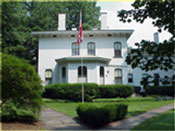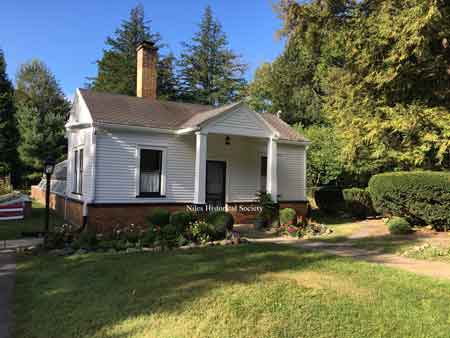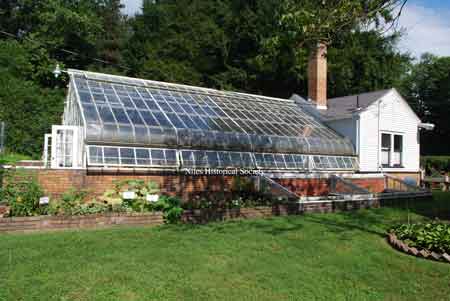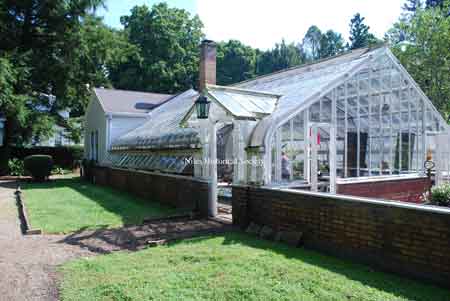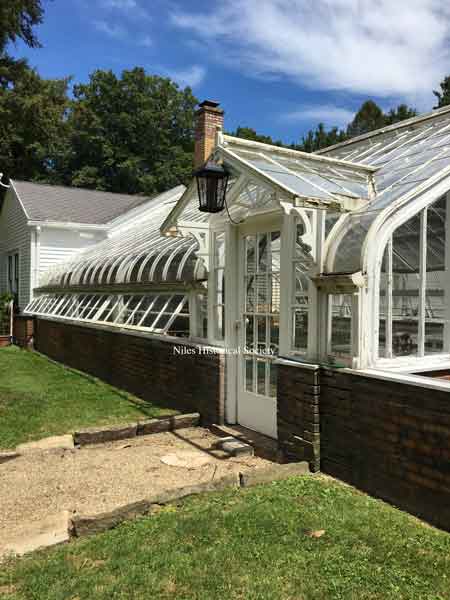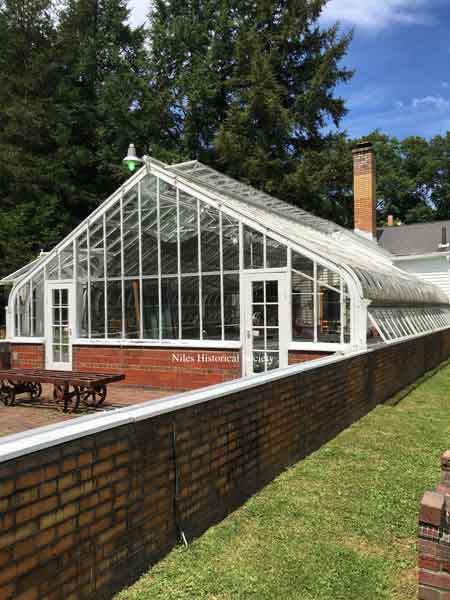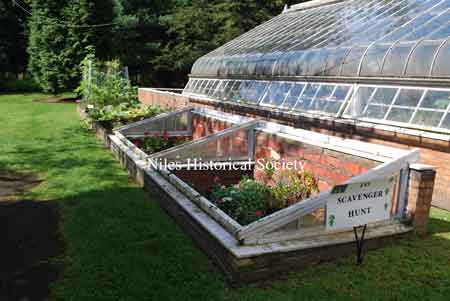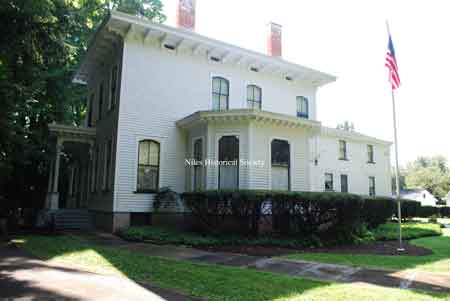
Front view of the Ward-Thomas
House
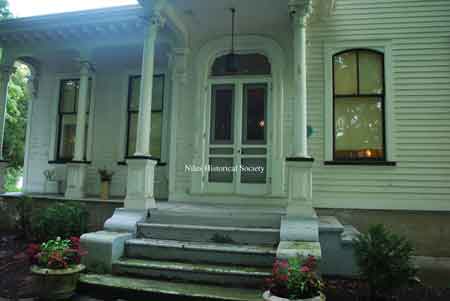
Main entrance to the Ward-Thomas
House
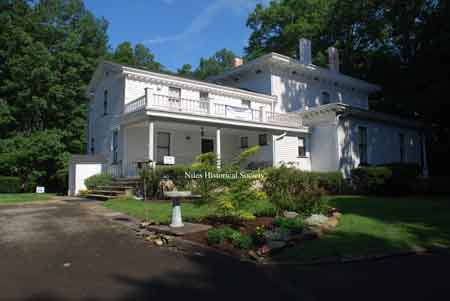
Rear view of the Ward Thomas House
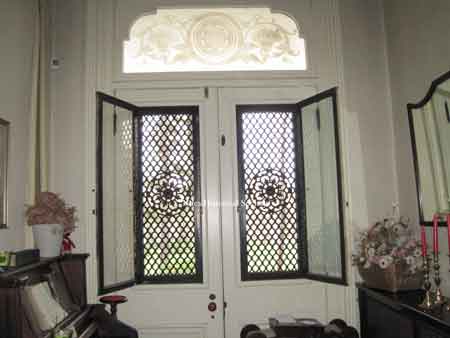
Doubledoors with etched glass
transom
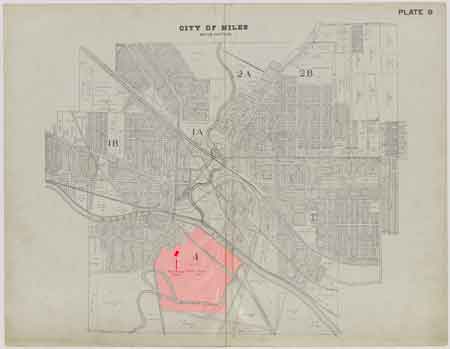
|
Building
the Thomas House.
William and Sarah Ward had seven
children. They came to America in 1817 and went directly to Pittsburgh,
Pa. William Ward was a practical iron worker and his sons obtained
knowledge of the business from their association with him. Their
son, James Ward, married Eliza Dithridge in
1835. Her family was also involved with the iron manufacturing
in Pittsburgh. In 1841 James Ward and his brother, William built
the first rolling mill in Niles. The firm was destined to play
a prominent role in the history of Niles, as well as the entire
Mahoning valley.
Just as the Heaton family founded the village of Niles, and the
industries that nourished it, so too the Ward family provided
the industrial leadership that transformed Niles from a diminutive
village of 300 inhabitants and a single furnace in 1840, to a
thriving industrial town with a population of around 3,000 by
1870. The first Ward plant stood on the north bank of the Mahoning
River, east of the viaduct. In 1859 James Ward built the Elizabeth
Furnace to supply the pig iron for his rolling mill. It was located
on the east side of the Mosquito Creek, about where East Park
Avenue crosses the creek.
In 1862 James and Elizabeth Ward built the house
at 503 Brown Street. A lot of thought obviously went into the
building of the house. The front entrance holds double doors with
glass windows which open to allow the air to flow into the house
and up the stairs which are in the main hallway. This allows for
the cooling of the house in the summer. Of course this was before
window screens as we know, so grates for the windows were installed
to prevent birds from flying inside. These were probably made
at the Ward factory and have the same motif as the frosted glass
window above the double doors. We were told that the windows also
held a frosted glass insert with the same motif, but they were
removed some time ago. The frosted glass panels were made by Eliza’s
brother, Edward Dithridge, who was a glass cutter and
engraver in Pittsburgh. .
When the carpet was removed from the parlor and the dining room
in 1999 to replace it, it revealed the wooden floorboards were
5 ½” wide and square nails were used. These nails
were probably made at the James Ward factory. Fireplaces were
used to heat the house when it was built in 1862, but years later,
as we discovered, there where 14” x 19” spaces cut
in the floor for gravity air returns to aid in the circulation
of the heat. Later cast iron radiators were installed as better
methods of heating became available. The basic part of the house
has remained the same since being built in 1862 and evidence of
the original construction can still be seen.
After 1887 when John R. Thomas and his wife, Margaret
purchased the house, some changes were made. The care and love
of both families, through the years has helped to preserve the
house to the showplace status it deserves. A way of life existed
here that will only be remembered in the history books. The fine
linens, use of china, crystals and silver that was used daily,
has been replace with paper plates and fast food. Today, sadly,
family dinners together, proper conversation, and social graces
have been lost in the rush of daily life for many people.
Our world is changing fast all around us and preserving the past
for future generations to see and learn from, has becomes a never-ending
job. The Niles Historical Society is forever grateful to the Thomas
heirs who deeded the acreage to the City of Niles for the museum
to be established in our town. The Ward-Thomas Museum is 149 years
old and still remains a fine example of Italianate Architecture,
a beautiful Victorian home loved and enjoyed by all who care for
it and those who visit it.
The Thomas property and location of the Ward-Thomas
house is indicated on the 1918 map.
|
| 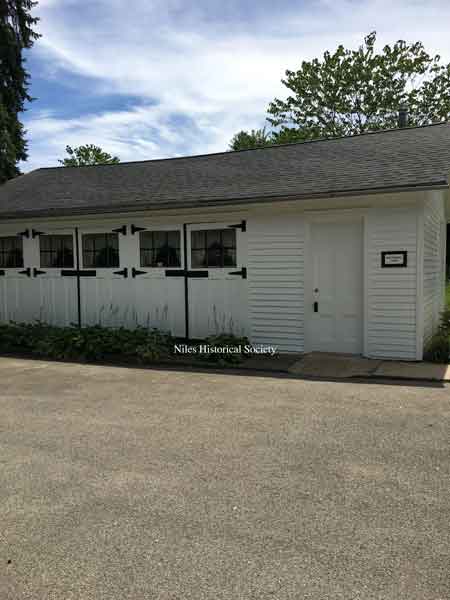
View of original carriage house |
There
are three main outbuildings on the property.
The former carriage house, now named The
Westenfield Room, is used for small meetings and displays.
The building was named in honor of R.C. Westenfield who formed
Niles Centennial Committee in 1934. In 1976 he served as chairman
on the Niles Bicentennial History Committee. Attorney Westenfield
was instrumental in gaining the beautiful Victorian mansion at
503 Brown Street which now is the home to the Niles Historical
Society.
The two-story wooden barn with two cupolas which
houses a full sized display of a kitchen at the turn of the last
century and displays of equipment used during that time period
such as tools and horse stalls original to the barn. The barn
is shown on the right.
|
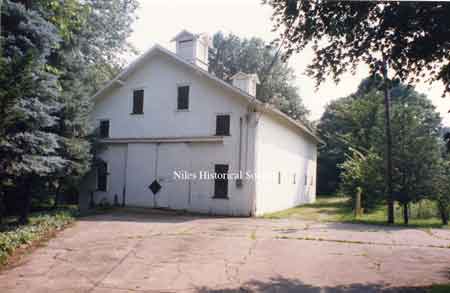
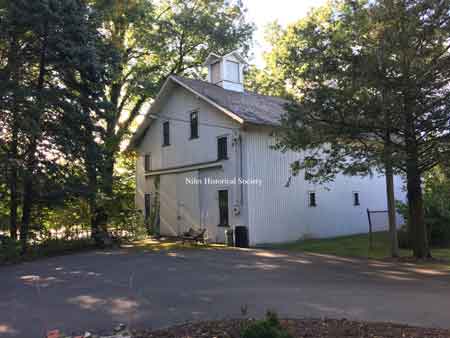
|


